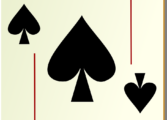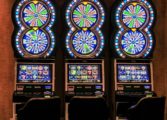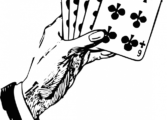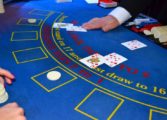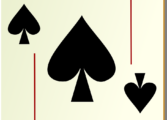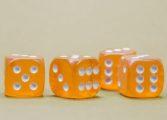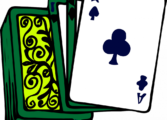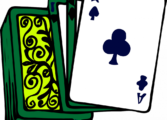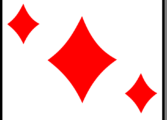Count Cards in Blackjack: Enhancing Your Casino Gaming Skills

[INRYK]
Are you a casino enthusiast looking to gain an edge in blackjack? Counting cards might be the strategy for you. Counting cards in blackjack is a technique used to determine the likelihood of advantageous situations based on the remaining cards in the shoe. By keeping track of which high and low-value cards have been played, players can make informed decisions on their bets, giving them a higher chance of winning.
Why Count Cards in Blackjack?
Counting cards in blackjack can significantly improve your odds of beating the house. By using this strategy, players are better equipped to make decisions on their bets, such as when to increase or decrease their wager. Counting cards is not an illegal practice, but casinos frown upon it and may ask players to leave if they are caught. However, it is essential to note that counting cards is not a guaranteed way to win consistently, as it requires skill, practice, and a deep understanding of the game.
A Brief History of Counting Cards in Blackjack

The concept of counting cards in blackjack dates back to the 1960s when a mathematician named Edward Thorp published a groundbreaking book titled “Beat the Dealer.” This book revolutionized the casino industry by introducing the idea that blackjack is a game of skill rather than pure chance. Thorp’s book explained the calculations and strategies behind card counting, which caught the attention of both professional and amateur gamblers.
The Evolution of Card Counting Techniques
Over the years, card counting techniques have evolved, with players developing more advanced methods to gain an advantage in the game. The High-Low system, created by Stanford Wong, is one of the most popular and widely used card counting strategies today. It assigns a value of +1 to low cards (2-6), 0 to medium cards (7-9), and -1 to high cards (10-Ace). By keeping a running count of these values, players can assess the favorability of the remaining cards in the shoe.
Other notable card counting techniques include the Knock-Out system, the Zen Count, and the Omega II system. These systems differ in complexity and require varying levels of expertise. However, it is crucial to understand that the effectiveness of card counting ultimately depends on the player’s ability to execute the strategy accurately and discreetly.
Counting Cards in Blackjack: How to Get Started
Before diving into card counting, it is essential to have a solid understanding of basic blackjack strategy. Familiarize yourself with the game’s rules, optimal betting strategies, and how to make strategic decisions based on your hand and the dealer’s upcard. Once you have mastered the fundamentals, you can start incorporating card counting techniques into your gameplay.
To count cards effectively, follow these steps:
- Assign a point value to each card: Use a card counting system to assign point values to each card played during the game. This will help you keep track of the count.
- Maintain a running count: As cards are dealt, keep a running count by adding or subtracting the assigned point values. This will give you an idea of the remaining high and low-value cards in the shoe.
- Calculate the true count: To account for the number of decks remaining in the shoe, divide the running count by the estimated number of decks still to be played. This step helps determine the true count, which is a more accurate measure of the player’s advantage.
- Adjust your betting strategy: Based on the true count, modify your betting strategy accordingly. Increase your bets when the count is high and favorable, and decrease your bets when the count is low or neutral.
Remember, mastering card counting takes time and practice. Start with a single deck, gradually increasing to multiple decks, and work on speed and accuracy. It is crucial to blend in with other players and avoid drawing attention to your counting efforts.
Counting Cards in Blackjack: Legal and Ethical Considerations
While card counting itself is not illegal, casinos have the right to refuse service to anyone they suspect of counting cards. Casinos monitor players for signs of card counting, such as consistently making large bets when the count is favorable. If you are suspected of counting cards, you may be asked to leave the casino or banned from playing blackjack altogether.
It is important to approach card counting ethically and responsibly. Avoid using electronic devices or collaborating with other players to gain an unfair advantage. Card counting should be viewed as a skill that enhances your understanding of the game, rather than a guarantee of consistent winning. Always remember to respect the casino’s rules and guidelines.
Conclusion
Counting cards in blackjack is a strategy employed by skilled players to gain a statistical advantage over the casino. By keeping track of the cards played, players can make informed decisions on their bets. However, card counting requires practice, precision, and a comprehensive knowledge of the game. It is essential to approach card counting responsibly and ethically, respecting the rules and guidelines set forth by the casinos. So, if you are up for the challenge, why not try your hand at counting cards in blackjack and see if it improves your casino gaming experience?





